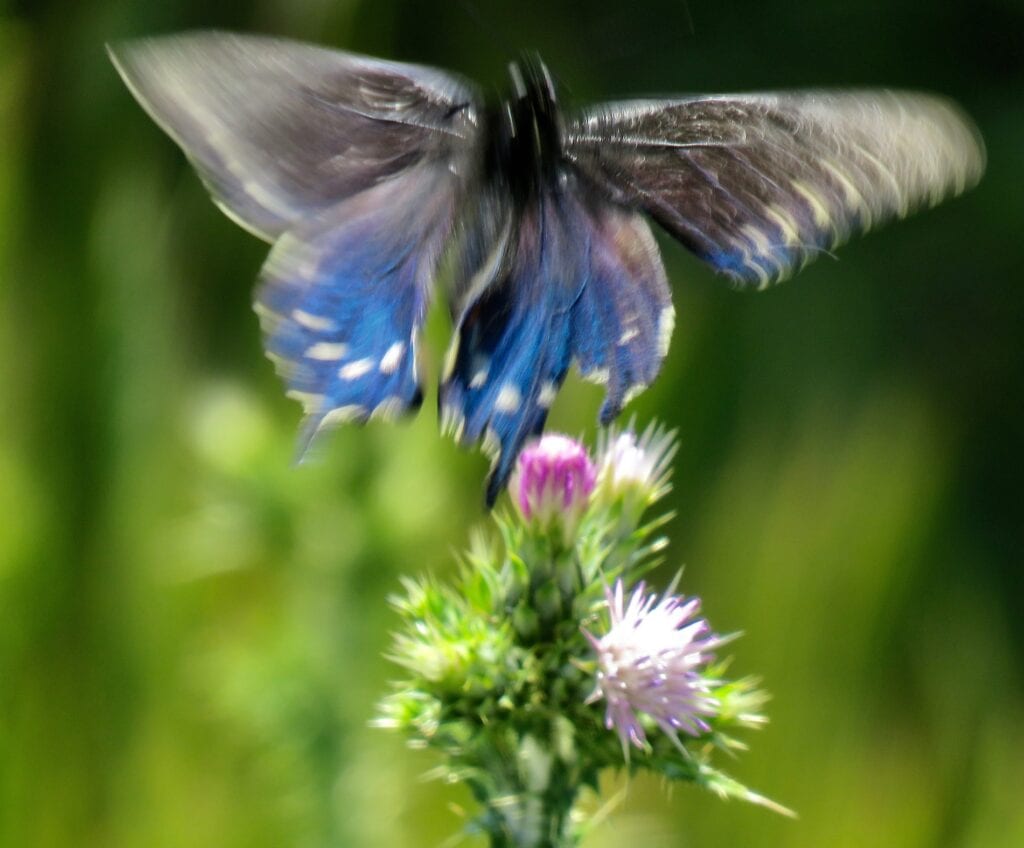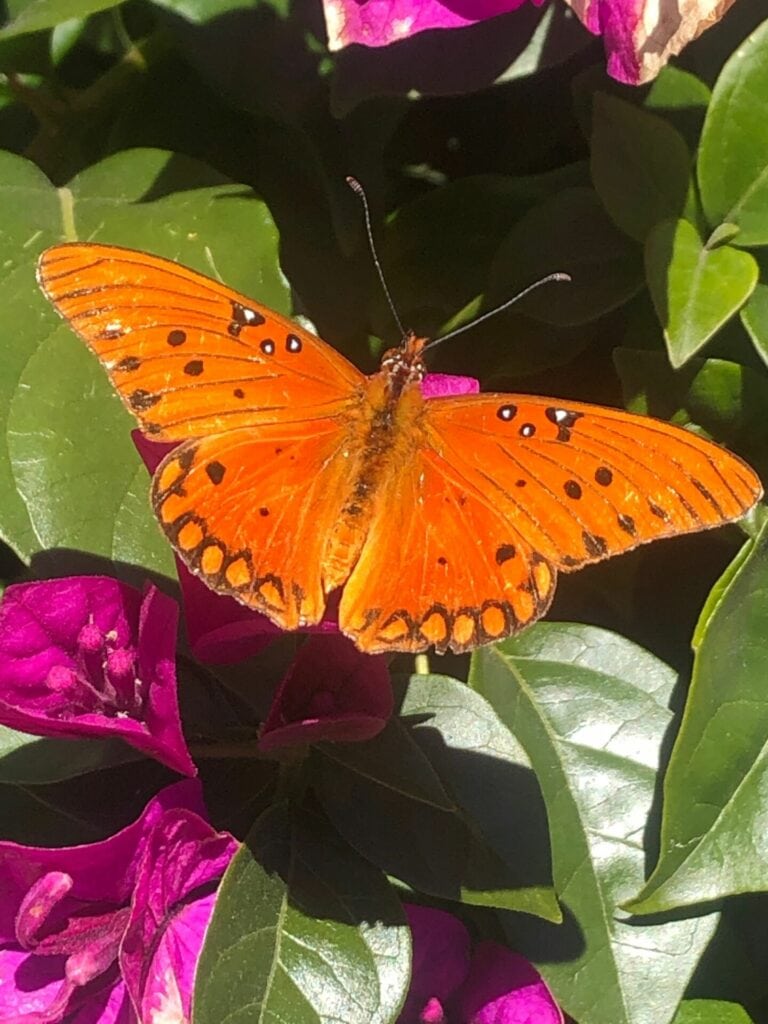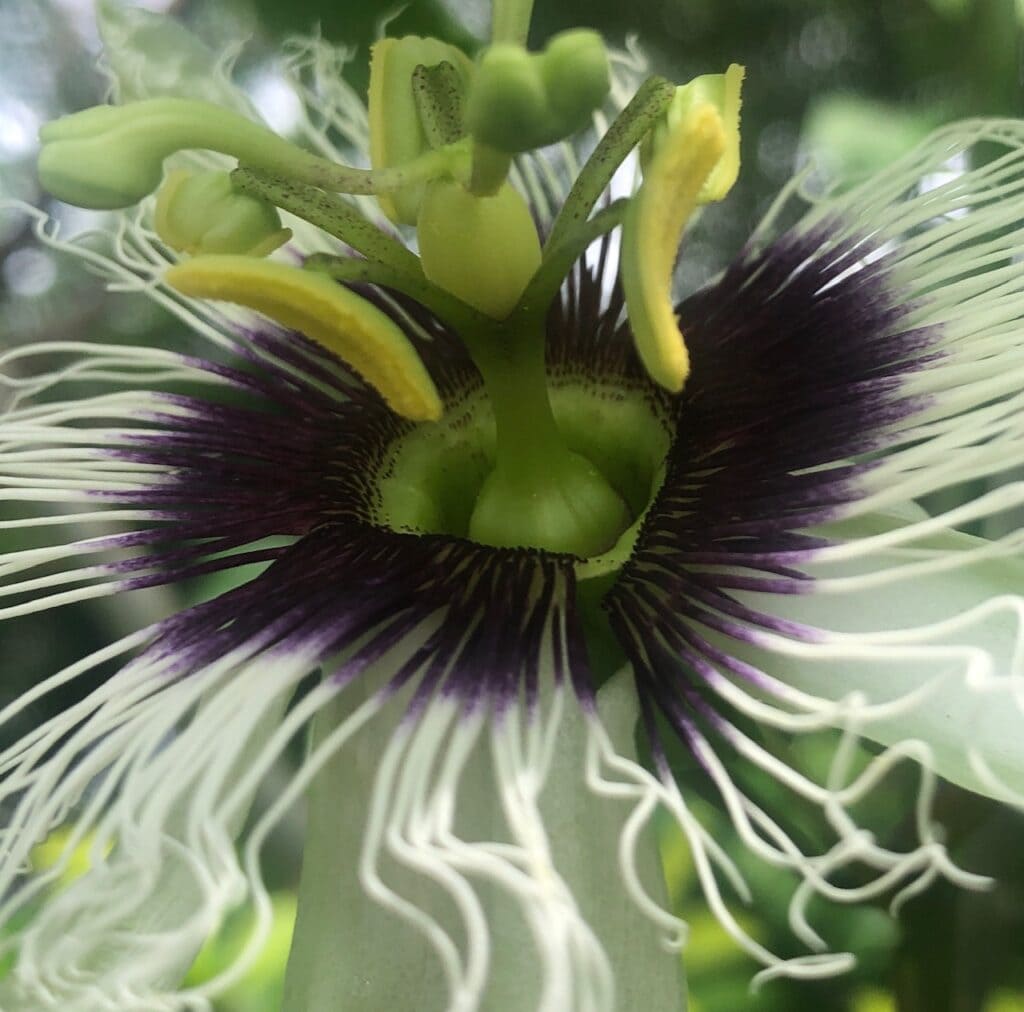I Heard It Through The Vine: Butterflies on Mount Sutro
By Liam O’Brien
People always come to a butterfly walk slightly fearful. I find this strange considering how much joy these bugs seem to give us all. But it is true primarily because many aren’t sure of their butterfly species and the butterflies fly around so damn fast how could anyone really identify them? (Fascinatingly enough this is how I feel on a bird walk.) The group always seems to be in awe when I throw out the known factoid that if one sticks to it long enough, and gives themselves many years to get it wrong, a person can not only identify a butterfly on the wing but they’ll be able to tell it’s sex then as well. I try to reassure a group before the walk that everyone can add to the day with their own set of eyes. ” If you see one flying that way and the group is looking the other way say, ‘There’s one!’ and everyone will look that way and hopefully I can identify it. But an interesting thing happened this season: it turns out I don’t really even need to be there.
On the morning of April 7th, 2022 Kelly Dodge, an employee of the Sutro Stewards was leading a group of volunteers up to the summit of Sutro. The following is an excerpt from an email Kelly recently sent me: ” We were at the large, main meadow right off from where the pavement ends from Nike Road. I saw a black and blue (this becomes important – the blue part) butterfly drop down from high above and into the meadow, it then flew towards the North Ridge Trailhead at the summit. Unfortunately it was moving too fast ( second clue ) to get a photo. On the same day Morgan told me he saw a Pipevine Swallowtail down by the Surge Lot around 1 p.m. Same individual?” The lawyer in me knew immediately we had a strong circumstantial case.

In another email Ildyko Polony, the Executive Director of the Sutro Stewards, wrote: ” I saw at least one after Kelly’s flying around sometime in the late spring/early summer. It may have been more than one individual. It was up at the summit. Bridget and I were sitting and I saw this butterfly flying in and out of the acacia thicket and in the fenced off area where the silvery lupine grows.
Alright before I break all of this down I must first state that in the three years of surveying the butterflies of Mount Sutro I’ve never seen a pipeline swallowtail up there. My working theory was they wouldn’t penetrate the forest of eucalyptus up there. But what these four people’s “sets of eyes” collectively reported makes me rethink things. In the pro column, Kelly saw a “black and blue” butterfly. She may not have know it but she just described the male Battus philenor – the Pipevine Swallowtail, The male has blue, gunmetal hindwings, the female is overall a matted brown. Another check in the pro column ” it was moving around too fast to get a photo” This bulleting aspect is a holdover from when our continent was a jungle. Many creatures there have evolved a speedy flight to avoid predation. The butterfly’s host plant ( the one she lays her eggs on ) is Aristolochia californica – the Dutch-man’s Pipevine. The third clue lies in this plant. For only a decade or so back, it was rediscovered down the slope from the summit – the location of at least two of the sightings. In conclusion, it was most assuredly a pipevine swallowtail the staff saw. One of the best parts of this gig has been how the folks in the nursery have taken to learning their butterflies. I can feel it in the glee of the reports.

All of this became important to me because on Saturday, September 17th, I saw our only other butterfly in the city to host on a vine up there. The Gulf Fritillary ( Agralis vanillae ) has been known to reside in San Francisco from reports of it in the Mission District in the 1960’s. It is our only non-native butterfly on a non-native host. It relies on Passionvine ( Passiflora) to lay its eggs on. A great story goes along with this creature. When “all things tropical”, spurred on by Hollywood movies of the 1940’s, began to sweep the country, nurseries in southern California began to fill up with exotic plants like palm trees, canna lilies and hibiscus. And Passionvine, not native to California, came up from Mexico during this wave. And with the plant came the butterfly. I’ve been to Mexico many times in the last decade and it’s easy to say the “Gulf Frit” is the “Cabbage White of Mexico” – it’s everywhere! It’s pushed its northern range all the way up to the southern border of Oregon. It is believed the larvae can not survive a frost. With the way global warming is going one has to ask just what is a frost anymore on the West Coast? I’m sure it will be in Alaska soon enough.

Now, would I recommend the Stewards add this plant to their plantings? Absolutely not. It is an aggressive, non-native that will easily get out of control. The butterfly has enough of it in gardens throughout the city. Yes, those flowers are beautiful, but if you get the one that produces actual passion fruit (delicious), you’ll have to enter your garden daily with a machete.

December will be the end of my three-year residency on Sutro. The Gulf Fritillary and the Pipevine Swallowtail are the 21st and 22nd species I’ve seen there ( We only have 36 species in the city). I smile at the thought of how utterly dismissive I was of the place for butterflies before even stepping up there – this “botanical donut hole in the center of a euc forest.” How wrong I was. It’s an important way station for these bugs in our urban jungle. Butterflies are opportunistic creatures capable of benefiting from any place our species puts an effort in to rehabilitate. I’ll miss being alone up there, sitting on a bench and watching the Anise Swallowtails checking eachother out. It warms my heart the Sutro Stewards will carry on the baton of championing what a special place this is for butterflies – the mesmerizing, enthralling world of these things bulleting around. Trust your instincts, Sutro staff. You got it right. This Pied Piper moves along.
Liam O’Brien is a lepidopterist who surveyed all the butterflies in SF County in 2009, created the Green Hairstreak Corridor in the Upper Sunset and works annually on the Endangered Mission Blue butterfly in the Marin Headlands. His first book for Heyday Press should arrive to the masses in 2025.
